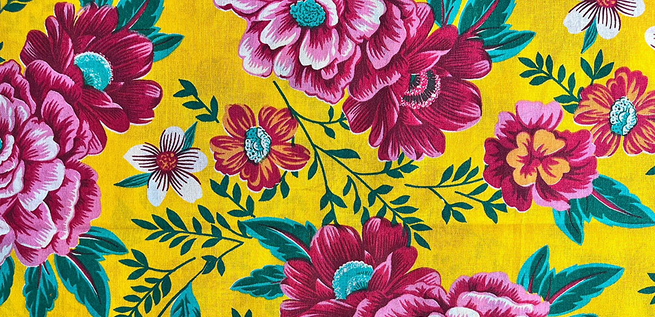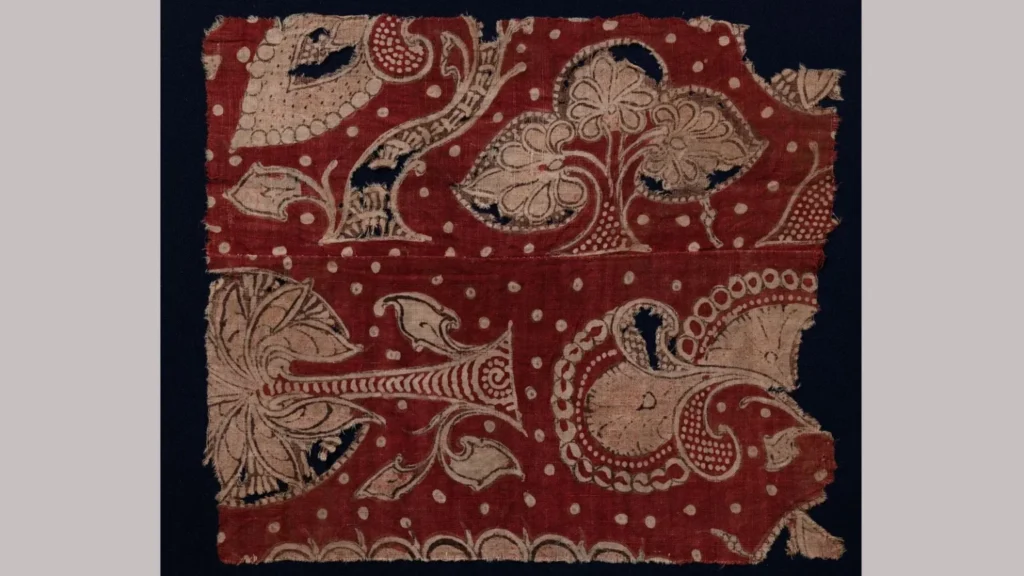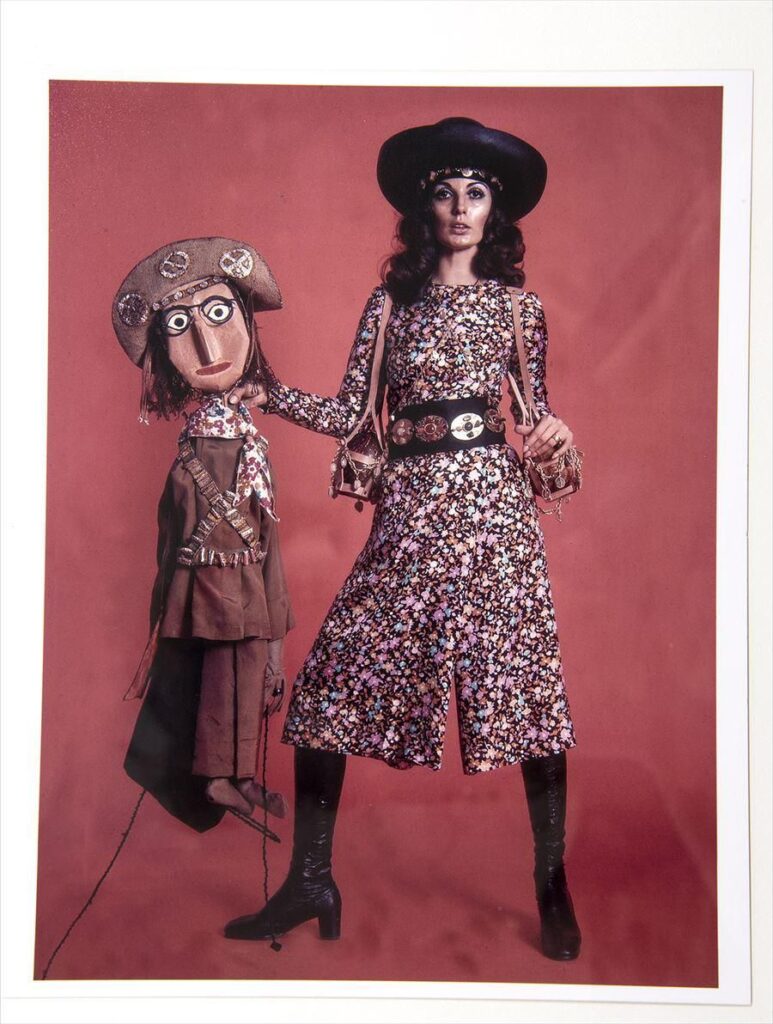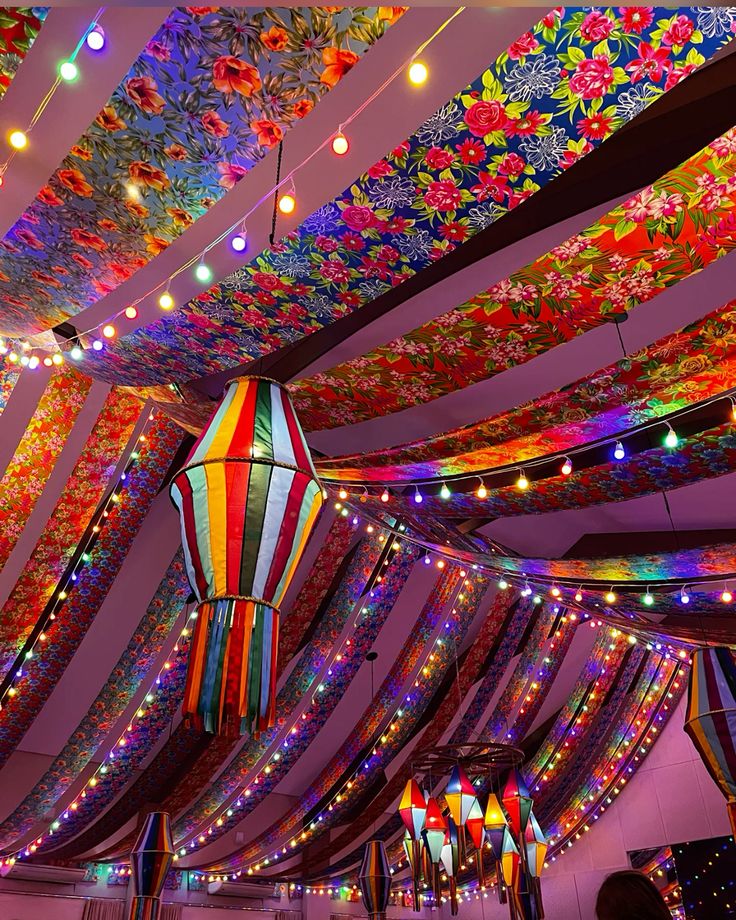
Chita is a bold, vibrant cotton fabric often seen in Brazil on traditional June festival dresses, tablecloths, and even as sink curtains in rural homes. Its hallmark? Big and small floral prints sometimes even polka dots or plaid. Nearly every Brazilian has touched, worn, or at least heard of this fabric. But while chita is deeply rooted in Brazilian daily life, its origins lie far from South America.
But it was in Brazil that chita found its soul, gaining rhythm, color, and identity. Cheap, accessible, and full of personality, chita evolved from an imported fabric into a symbol of Brazilian culture and creativity.

This colorful fabric was originally known as chintz, a hand-printed cotton textile made in India. During the European colonial expansion of the 16th and 17th centuries, Portuguese traders brought it to Europe, where it quickly became fashionable among the upper classes. Its fine textures and exotic floral motifs turned it into a status symbol across aristocratic homes.
In the early colonial period, Brazil was forced to import printed cotton fabrics from India and England. These fabrics were often used as currency in the transatlantic slave trade. Although the connection is painful, it marked the beginning of a textile market that would later be transformed by local industries.
The first major factory to produce chita in Brazil was the Companhia de Fiação e Tecidos Cedro & Cachoeira, founded in 1872. Over time, chita became known as the “fabric of the poor.” It brightened up homes, parties, and wardrobes wherever money was tight. Though dismissed by the elite, chita became a canvas of popular imagination and resilience.
In the 1930s, women’s magazines promoted the image of the caipira (country girl) in floral chita dresses reinforcing stereotypes and subtly pushing the fabric out of the “sophisticated” fashion world.

But in the 1970s, chita experienced a revival. Artists and designers rediscovered its aesthetic power and reclaimed it as a cultural statement. It became a symbol of Brazilian identity, resistance, and pride in the aesthetics of everyday life.
Fashion designer Zuzu Angel (1921–1976), a pioneer of Brazilian style, brought chita to the runway in the late 1960s defying the dominance of imported European standards. In her 1967 Moda e Liberdade collection, she paired chita with lace, ribbons, and folk elements. In 1970, her International Dateline Collection I was shown at Bergdorf Goodman in New York, featuring chita, northeastern lace, Brazilian gemstones, bamboo, and seashells marking the first time such rich local materials appeared in a global fashion showcase. For Zuzu, fashion was a political and cultural voice, not just aesthetics.
Chita endured in avant-garde theater like Teatro Oficina, in the Tropicália cultural movement, and in the joyful chaos of Carnival songs. It became a printed protest, a symbol of popular creativity, and a celebration of resilience. Today, chita moves across generations, catwalks, and social design projects. It appears in fashion, furniture, contemporary art and still carries a message loud and clear: being simple is not being lesser.
Chita has never been just fabric. It’s a visual language of a people who stitch history with what they have.
